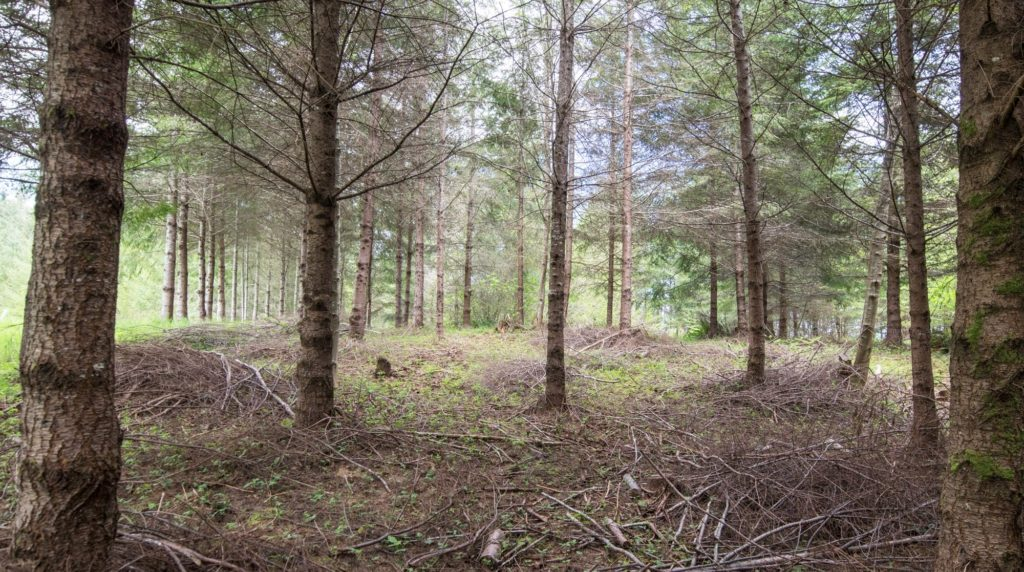Tree thinning is a crucial practice in arboriculture that involves selectively removing branches and foliage from trees to improve their health, structure, and overall appearance. This process is essential for promoting proper growth, reducing risk, and enhancing the aesthetic appeal of landscapes. In this comprehensive guide, we’ll explore the importance of thinning trees, the benefits it offers, the best practices to follow, and why hiring professionals is the smart choice for this task.
Importance of Tree Thinning
Thinning the branches of trees is not merely about aesthetics; it’s a fundamental aspect of tree care that promotes resilience and sustainability in your landscape. As trees age, natural processes like branch overcrowding can impede their ability to flourish. This not only compromises their structural integrity but also invites a host of problems like fungal infections and pest infestations. Through strategic thinning trees, you’re giving your trees the breathing room they need to develop strong, well-spaced branches, ensuring their long-term health and vitality. It’s a proactive measure that pays dividends in the form of lush, thriving trees that enhance the beauty and functionality of your outdoor space.
Benefits of Tree Thinning
- Improved Air Circulation:
Thinning out branches allows for better air circulation within the tree canopy, reducing the risk of fungal infections and promoting overall tree health.
This enhanced air circulation not only promotes the overall health of your trees by minimizing the conditions that favor disease but also contributes to better nutrient distribution and more efficient photosynthesis. It’s akin to giving your trees a breath of fresh air, allowing them to thrive and flourish in a balanced, well-ventilated environment.
- Enhanced Sunlight Penetration:
Removing excess branches is akin to opening windows in a room, allowing sunlight to flood in and illuminate every corner. This influx of sunlight is crucial for the inner branches and foliage that may have been overshadowed by dense canopies. When sunlight reaches these previously shaded areas, it kickstarts a cascade of growth-promoting processes.
Firstly, increased sunlight exposure stimulates photosynthesis, the lifeblood of plants. With more sunlight, trees can produce more sugars and carbohydrates, fueling their growth and overall vitality. Additionally, sunlight exposure promotes the development of strong, healthy leaves and branches, contributing to a robust canopy that can withstand environmental stresses.
Moreover, enhanced sunlight penetration benefits not just the trees themselves but also the surrounding ecosystem. More sunlight reaching the ground encourages the growth of understory plants, fostering biodiversity and creating a more vibrant and balanced environment. It’s a symbiotic relationship where thinning trees acts as a catalyst for the flourishing of life within and around your trees.
- Reduced Risk of Storm Damage:
Thinning trees is like giving them an aerodynamic makeover, making them better equipped to face nature’s fury. One of the significant advantages of thinning trees is its impact on wind resistance. When trees have dense canopies with overlapping branches, they act like sails, catching and resisting the force of strong winds. This can lead to structural stress and even breakage during storms.
By selectively thinning branches, you’re reducing the tree’s wind profile, making it less vulnerable to wind-induced damage. Thinning also removes excess weight from branches, reducing the risk of them becoming overly heavy and prone to breakage under windy conditions. This not only protects the tree itself but also minimizes the potential for property damage or injury during storms. It’s a proactive measure that fortifies your trees against the unpredictable forces of nature, ensuring their resilience and longevity.
Best Practices for Tree Thinning
- Identify Target Branches:
Start by identifying branches that are crossing, rubbing, or growing inward toward the tree. These branches are candidates for removal to improve the tree’s structure.
- Use Proper Pruning Techniques:
When thinning branches, use proper pruning cuts to minimize damage and promote healing. Cut outside the branch collar and avoid leaving stubs.
- Consider Tree Species:
Different tree species may require specific tree-thinning techniques. Consult with an arborist to ensure the best approach for your tree.
- Timing Matters:
The best time for tree trimming depends on the tree species and local climate. In general, late winter or early spring is ideal before new growth begins.
Hiring Professionals for Tree Thinning
While thinning the branches of trees can seem straightforward, it’s often best left to certified arborists with the expertise and equipment to perform the job safely and effectively. Here’s why hiring professionals is beneficial:
- Expertise:
Arborists have the knowledge and experience to assess tree health, identify the right branches for thinning, and perform precise pruning cuts.
- Safety:
Thinning trees can involve working at heights and using specialized tools. Professionals are trained in safety protocols to avoid accidents and property damage.
- Proper Equipment:
Arborists have access to the proper equipment, such as pruning saws, loppers, and safety gear, to perform thinning trees efficiently.
- Tree Health:
Professionals ensure that thinning trees is done in a way that promotes tree health and reduces the risk of stress or damage.
Conclusion
In conclusion, tree thinning, Tree Removal is a vital practice for maintaining healthy and resilient trees. By removing excess branches, improving air circulation, and reducing risk, thinning tree contributes to the overall well-being and aesthetics of your landscape. Remember to follow best practices and consider hiring certified arborists for professional thinning tree services that ensure the long-term health and beauty of your trees.


